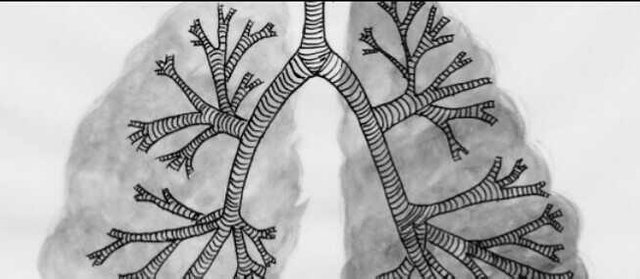Scientists Discover a Tiny Stomach Hidden Inside Lung Tumours, Because Cancer Is Changing

The findings, published in Developmental cellular, underscore the extraordinary resilience and plasticity of most cancers cells.
Such plasticity can presumably permit tumors to increase drug resistance, arguably the most important venture to a success cancer treatment.
most cancers cells will do some thing it takes to survive, says Purushothama Rao Tata,
lead study author and assistant professor of cellular biology at Duke university faculty of medicine and a member of the Duke cancer Institute.
Upon remedy with chemotherapy, lung cells close down a number of the important thing mobile regulators and choose up the traits of other cells if you want to advantage resistance.
Tata has spent most of his profession reading the cellular kinds that make up normal lung tissue and the way those cells show flexibility at some point of regeneration following an damage.
Tata started out to wonder whether or not a number of the same rules that he had observed governing the regular development and regeneration of tissues may additionally be answerable for the jumbled nature of tumor cells.
He determined to recognition on non-small mobile lung most cancers, which accounts for eighty to 85 percent of all lung cancer cases.
Lung most cancers is the main purpose of cancer deaths international, and has one of the lowest survival quotes among all cancers.
Tata analyzed information from the most cancers Genome Atlas research community, a massive consortium that has profiled the genomes of heaps of samples from 33 exceptional forms of most cancers.
He determined that a big percentage of non-small cellular lung most cancers tumors lacked NKX2-1, a gene acknowledged to specify the lung lineage.
alternatively, a lot of them expressed a number of genes associated with esophagus and gastrointestinal organs.
within the absence of NKX2-1, Tata hypothesized, lung tumor cells would lose their lung identification and take at the traits of different cells.
due to the fact for the duration of improvement lung cells and intestine cells are derived from the same figure, or progenitor, cells, it made feel that after the lung cells misplaced their manner they would comply with the path of their nearest developmental sibling.
to test whether or not this become the case, Tata and his colleagues generated distinct mouse models. First, they knocked out the NKX2-1 gene within the lung tissue of mice.
underneath the microscope, they noticed functions that usually best appear in the gut, inclusive of crypt-like structures and gastric tissues. Amazingly, these structures produced digestive enzymes, as though they resided within the belly and no longer the lung.
Having proven that a easy genetic tweak could prompt lung cells to interchange developmental tracks, Tata questioned if another tweak or should gasoline them to shape tumors. This time, similarly to knocking out NKX2-1, they activated the oncogenes SOX2 or KRAS.
The group found that mice with the superimposed SOX2 mutations evolved tumors that looked as though they belonged within the foregut; people with KRAS mutations advanced tumors that resembled components of the mid- and hindgut.
Tata and associates then desired to realize if those genes have been sufficient to alter the destiny of lung cells, or if they needed extra signals from their local microenvironment.
to reply this question, they developed a novel "mini-lung tumoroid" device—miniaturized variations of lung tumor tissue—and located that manipulation of genetics became sufficient for the lung cells to expose such plasticity.
cancer biologists have lengthy suspected that cancer cells ought to shape shift if you want to evade chemotherapy and acquire resistance, but they did not understand the mechanisms in the back of such plasticity, says Tata.
Now that we recognise what we are coping with in these tumors – we will think ahead to the possible paths these cells may take and layout therapies to dam them.
within the destiny, Tata plans to apply his mini-lung tumoroid machine to similarly discover the mechanisms of resistance in lung cancer cells.
The big apple Stem mobile basis, the country wide Institutes of health/countrywide heart, Lung, and Blood Institute Early career research New college (P30) award, the Harvard Ludwig most cancers middle, the Massachusetts Eye and Ear Infirmary, a Harvard Stem cell Institute Junior Investigator grant, an NIH MSTP education supply, the scientific Scientist schooling application, an NIH/NHLBI career development Award, the Whitehead student application, the Maroni research pupil program, and the HHMI faculty pupil program funded the work.